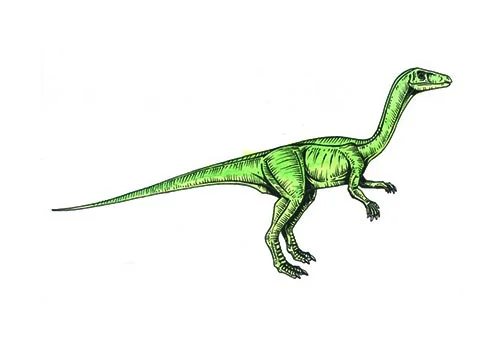Procompsognathus (Before elegant jaw)

Pro-comp-sog-nay-fuss
Eberhaad Fraas - 1913
Insectivore/Carnivore
Estimated 1 meters long
Small Theropod
P. triassicus (type)
Germany, Baden-Wurttemberg - Lowenstein Formation
Late Triassic, 210-205 million years ago
Procompsognathus Facts
Procompsognathus, meaning “before elegant jaw,” is a genus of small carnivorous dinosaur that lived during the Late Triassic period, approximately 210 to 205 million years ago. It was a member of the group known as theropods, which were characterized by their sharp, serrated teeth and bipedal stance.
Procompsognathus was first discovered in Germany in 1909 by Albert Burrer. Since then, additional fossils have been found in various locations around the world, including Arizona, United States.
As its name suggests, Procompsognathus is believed to be an early relative of the later Compsognathus. It shares some physical characteristics with Compsognathus, such as a slender, lightweight body, but also has a number of differences, including a longer tail and a more primitive skull structure.
Procompsognathus was a small dinosaur, measuring only around 1 meter (3.3 feet) in length and weighing less than 1 kilogram (2.2 pounds). It had a slender build, with long, powerful hind legs that allowed it to run at high speeds. Its arms were relatively small and ended in three-fingered hands with sharp claws.
As a carnivore, Procompsognathus likely hunted small prey, such as lizards, insects, and other small dinosaurs. Its teeth were sharp and serrated, and it had a powerful jaw that could deliver a strong bite. The long tail of Procompsognathus may have helped it to balance while running and maneuvering in pursuit of prey.
While Procompsognathus was relatively small and primitive compared to later theropods, its discovery and study have provided valuable insights into the early evolution of this diverse group of dinosaurs. As a paleontologist, studying fossils of Procompsognathus and other dinosaurs helps us to better understand the origins and adaptations of these fascinating creatures, and the world they lived in millions of years ago.



